The workplace is an evolving environment and many industries are embracing the changes that technology is enabling to occur. No longer does every employee need to be in the office in front of their computer between the hours of 9am and 5pm. A flexible work environment is no longer a nice idea, but a reality, and in many cases, a necessity.
Flexible workplaces are not a feasible option for many occupations and roles, but for so many it works. Whether you have a mum who works part-time in the office and part-time at home, an employee who is unable to travel to the office due to an injury/illness/disability or a wide range of other personal circumstances, flexible workplaces is growing in popularity and demand.
These days it is easy to work from home and on the road. Computers, laptops, tablets, smartphones, internet, wireless technology … all of the above allows an ‘office’ to be set up almost anywhere. These technologies are paving the way for a flexible workplace and flexible lifestyle that makes working easier for many individuals who previously struggled with a work-life balance for various reasons.
One of the keys to making this all work is communication, and that is where technology comes in. If you are in a remote rural town, you can still work for a city-based company, depending on the role and responsibilities required of course. Connect to the office via a computer and internet. If you cannot attend a face-to-face meeting with a colleague or client, set up a phone or video conference and still be involved from any location.
A flexible workplace enables many individuals who would normally not being able to work a chance to work. Individuals with specialised skill sets but leave in remote towns where there are no jobs to suit, individuals living with an illness or disability, others with family responsibilities or transport difficulties. These are just a few of the reasons why flexible workplaces work for many.
Of course, like with everything, with the benefits there comes the downside. What could possibly be a negative to workplace flexibility you ask? Firstly, lack of social interaction and isolation for employees. Working from home or a remote office limits social interaction and inclusion with colleagues and clients. This, of course, depends on the job and what the specific role entails, but for many, face to face contact may be non-existent if not minimal.
From the perspective of an employer, not physically having an employee in the workplace can also lead to trust issues as the employer may not be able to adequately supervise an employee and know if he or she is working the hours they are being paid to, and know exactly what they are doing. Working away from the office requires trust and communication between the employer and employee.
The costs involved in setting up a flexible, or remote, workplace may also cause an impact on some businesses. The cost in many cases will be similar to that of employing someone in the main office, but things like additional internet connections and workplace safety practices etc. will likely increase the costs involved.
Is a flexible workplace something that would work for your business and industry? There are many factors that need to be taken into consideration, and a lot of planning is required to organise the set up and work out how to make it work for you. The biggest factor involved is the industry and the individual job/role. Regardless of the job role and industry, I believe the biggest factor is communication and the trust between the employer and employee, this is what needs to work to make a flexible workplace not only viable but successful.







